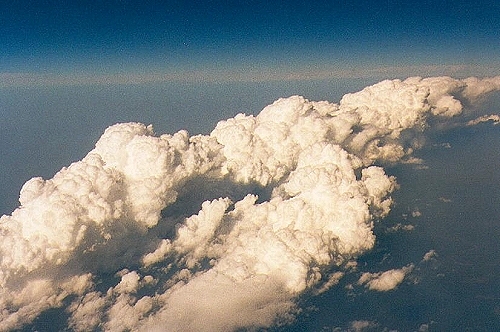Working group "Convective Systems", Leader Dr. Ulrich Corsmeier
Convection is a process that provides for the redistribution of momentum, heat, and water as well as of natural and anthropogenic trace gases in the atmosphere. Hence, convection exerts a major influence on weather and climate as well as on the quality of breathing air. Convective systems range from small-scale thermics to mesoscale convective complexes. As a consequence, their transport efficiency varies considerably.
Work of the Convective Systems group focuses on:
- Investigation of mechanisms causing convection in complex terrain
- Determination of the transport efficiency of convection on various scales
- Analysis of the forecast performance of convective precipitation in numeric models with case studies
- Development of new instruments and measurement techniques to study the convection
Apart from ground-based vertical sounding systems, a research aircraft of the type DO 128 as well as a dropsonde system are applied to determine convection. Using ground based and airborne platforms, we are doing process studies on different scales in the field of convection to understand the triggering of convection over complex terrain (e.g. low mountain ranges) and to determine, which amout of transport of heat, humidity and trace gases are caused by convection. These transports influence air quality and weather as well.
Thermal stability of atmospheric stratification as well as secondary circulation systems play an important role in triggering of convection over hilly and mountainous terrain. The different phases of the development of convection have been described by the analysis of several process studies, i. e. measurements within the atmosphere. By clicking the key words, detailed results of the specific step of the development of convection will be displayed. The acronyms in brackets point to the projects, the specific results are derived from.
- Warming of mountain slopes with different steepness and exposure to the sun; evaporation (REKLIP, VERTIKATOR, COPS)
- Onset of slopewinds and uphill transport of warm and moist air; development of convergence zones over the mountain ridges (SLOPE, PRINCE)
- Exceedance of the trigger temperature for convection (VERTIKATOR)
- Circulation scheme over complex terrain: mountain venting and cloud venting (PRINCE, COPS)
- Development of convection and clouds over the mountain ridges - Break through of convective cells through the boundary layer inversion (TRACT, PRINCE)
- Replenishment of humid air to the convective cells by valley winds (VERTIKATOR)
- Development of deep convection (Cb) (PRINCE, COPS, Working Group "Cloud Physics and Radar Meteorology")
- Severe weather with hail and storm and high risk of damage (CSIP, COPS, Working Group "Weather systems: Modeling and hazard analysis")
You are interested in further informations?
Please have a look at our projects, publications, posters and scientific reports or get in contact with our team.

Cumulus clouds over the Ukraine at about 5 pm local time at July 26, 2000.
The triggering of the clouds was caused permanently over a rather small area at the ground.
You can see the driftage of the clouds regenerated over a long time.
